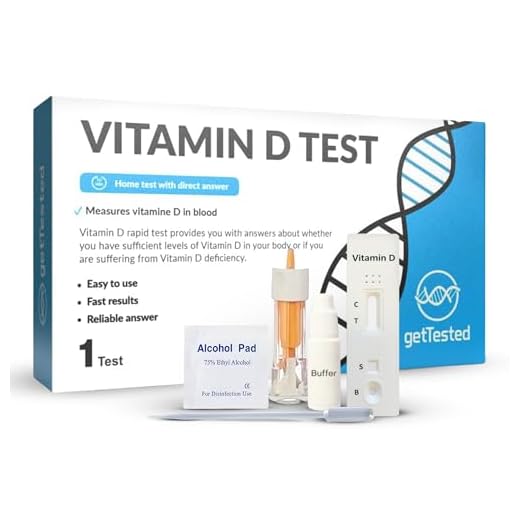







Vitamin D deficiency can seriously impact your athletic performance and health. Affecting over 56% of athletes, it leads to muscle weakness, increased risk of injuries, and greater susceptibility to infections. This deficiency not only hinders muscle function and recovery but also heightens chronic pain and fatigue, making it harder to train. If your serum levels fall below 30 ng/mL, you're at an even greater risk. To support your performance, it's vital to monitor your vitamin D levels and consider supplementation. Discovering more about supplementation strategies and dietary sources can help you optimize your athletic potential.
Key Takeaways
- Vitamin D deficiency affects 56% of athletes, leading to muscular weakness, chronic pain, and increased injury rates.
- Deficient athletes experience higher susceptibility to infections, negatively impacting training and performance.
- Adequate vitamin D levels enhance muscle function, recovery, and performance metrics like sprint speed and vertical jump.
- Supplementation of 800 IU/day can significantly reduce stress fractures and improve overall athletic resilience.
- Regular screening for vitamin D levels is essential, particularly for athletes with limited sun exposure or darker skin.
Overview of Vitamin D Deficiency
Vitamin D deficiency is a significant concern for athletes, with an estimated 56% affected, far surpassing the 24-40% seen in the general population. This prevalence of deficiency can severely impact your performance and overall health. Dark-skinned athletes face a heightened risk due to higher melanin levels, which inhibit vitamin D synthesis from sunlight. Seasonal variations also play a role, especially during winter months when vitamin D levels can drop below 20 ng/mL, particularly for those who train indoors. Adequate vitamin D, particularly in its most active form, is essential for bone health and overall physiological processes.
Insufficient vitamin D can lead to various symptoms of deficiency, including muscular weakness, chronic pain, and fatigue. Furthermore, it increases your risk of injuries, making it important to address this issue. Power sport athletes are particularly vulnerable, with about 65.4% experiencing inadequate levels compared to 32.9% in endurance athletes.
Recognizing these risks is important; many athletes may be asymptomatic, unaware of the underlying deficiency. To maintain optimal performance and reduce injury rates, it's necessary to monitor your vitamin D levels and consider supplementation or dietary adjustments, especially during periods of limited sun exposure.
Prevalence Among Athletes
A significant proportion of athletes face vitamin D deficiency, with estimates suggesting that 30-50% are affected, particularly among those who train indoors. This deficiency is largely due to limited sun exposure, which is vital for vitamin D synthesis. Seasonal variations also play a significant role; deficiency rates increase markedly during winter months when sunlight is scarce. Vitamin D3 is essential for overall health and well-being, supporting ideal bone health and enhancing immune system function, which are critical factors for athletic performance the importance of Vitamin D3.
In terms of specific athletic disciplines, power sports athletes show a higher deficiency rate of 65.4%, compared to 32.9% among endurance athletes. This discrepancy highlights the potential impact of training environments and schedules on vitamin D levels. Additionally, darker-skinned athletes are at a greater risk of deficiency, as higher melanin levels reduce the skin's ability to synthesize vitamin D from sunlight.
A thorough review indicates that around 56% of athletes are vitamin D deficient, a concerning trend when compared to the general population's deficiency rates of 24-40%. For athletes, this prevalence of vitamin D deficiency could have further implications, underscoring the need for awareness and proactive measures to guarantee adequate vitamin D levels across different training environments and demographics.
Importance for Performance
Given the high prevalence of vitamin D deficiency among athletes, understanding its significance for performance is essential. Vitamin D plays a critical role in muscle function and strength, as it regulates immune responses and antimicrobial peptide production, which are essential for overall health and recovery. Athletes with sufficient levels often see improved performance metrics, like sprint speed and vertical jump height. Conversely, a deficiency can lead to increased injury rates, impairing recovery and increasing susceptibility to stress fractures and chronic pain.
Moreover, maintaining ideal serum vitamin D levels is essential for immune function. Athletes with levels below 30 ng/mL are at a higher risk of infections, which can notably hinder training and performance. Research shows that higher vitamin D levels correlate with quicker recovery from exercise-induced muscle damage, enhancing overall athletic performance. Vitamin D influences immune responses and helps modulate inflammation, further supporting athletes during intense training periods.
Seasonal variations also impact vitamin D levels, particularly during winter months when up to 56% of athletes may be affected. This deficiency can diminish your competitive edge, making it vital to monitor and manage your vitamin D status year-round. By prioritizing sufficient vitamin D intake, you can support muscle function, reduce injury risks, and enhance your athletic performance.
Vitamin D Metabolism
Synthesizing vitamin D is a complex process vital for athletes' health and performance. It primarily occurs in the skin through UVB radiation, converting 7-dehydrocholesterol to vitamin D3. This form then undergoes hydroxylation in the liver and kidneys, resulting in calcitriol, the active form of vitamin D. Your vitamin D status is mainly indicated by serum 25-hydroxy vitamin D (25-OHVD) levels, reflecting both your endogenous synthesis and dietary intake.
Seasonal variations and geographical location greatly affect vitamin D metabolism. You might notice lower production during winter months or in high-latitude regions due to reduced sunlight exposure. Additionally, if you have higher body fat, you could be more susceptible to vitamin D deficiency, as this nutrient tends to be stored in adipose tissue, limiting its bioavailability for essential physiological functions in skeletal muscle.
To optimize your vitamin D levels, consider your dietary intake, sun exposure, and body composition. Monitoring your serum 25-hydroxy vitamin D concentration can help you assess your vitamin D status, ensuring you maintain adequate levels to support your athletic performance and overall health.
Risk Factors for Deficiency
While maintaining ideal vitamin D levels is essential for athletic performance, several risk factors can hinder your ability to achieve adequate status. Athletes training indoors, especially in high-latitude areas, face increased risk of vitamin D deficiency due to limited sun exposure, particularly during winter months. Seasonal variations also play a vital role, with studies showing only 1.6% of athletes reached peak vitamin D levels in winter.
If you have darker skin, you might be at greater risk, as higher melanin levels reduce your skin's ability to synthesize vitamin D from sunlight. Low energy availability can further exacerbate deficiencies, particularly among young athletes and those with a history of stress fractures. This is especially true for power sport athletes, who exhibit a staggering deficiency rate of 65.4%.
Additionally, intrinsic factors like being under 18 years of age and having a lean body mass increase your vulnerability to vitamin D deficiency. Recognizing these risk factors is essential, as they can greatly impact your overall health and athletic performance. Addressing them proactively can help you maintain peak vitamin D levels and enhance your training outcomes.
Effects on Muscle Function
Enhancing muscle function relies heavily on adequate vitamin D levels, as this nutrient plays a crucial role in calcium binding efficiency essential for muscle contractions. When your vitamin D levels drop below 30 ng/mL, you increase your risk of muscle injuries, particularly if you've had previous injuries. A staggering 98.4% of athletes during winter months aren't hitting ideal vitamin D levels, which can impair muscle function and overall athletic performance.
Research shows that higher serum vitamin D levels are linked to improved sprint performance and vertical jump capabilities, essential metrics for any athlete. Additionally, supplementation of 800 IU/day of vitamin D has been associated with a significant reduction in stress fractures, enhancing muscle health and resilience.
Immune System Implications
Vitamin D deficiency not only impacts muscle function but also plays a significant role in your immune system's effectiveness. Research shows that athletes with low serum vitamin D levels are more susceptible to respiratory tract infections, especially during winter months when levels typically decline. This increased risk can lead to more frequent illnesses, which disrupt your training periods and hinder overall performance.
When your immune function is compromised due to vitamin D deficiency, you may experience longer recovery times from illnesses. This can exacerbate the challenges you face during intense training, as illness recovery becomes a barrier to maintaining peak performance. Studies suggest that vitamin D supplementation can enhance immune function, potentially reducing the incidence of respiratory infections among athletes.
Assessment of Vitamin D Levels
Evaluating your vitamin D levels is vital for maintaining ideal athletic performance and overall health. The primary indicator of your vitamin D status is serum 25-hydroxy vitamin D (25-OHVITD). Levels below 20 ng/mL indicate deficiency, while levels above 30 ng/mL are generally sufficient for bone health. For best fracture prevention, aim for serum levels above 40 ng/mL.
Routine screening for vitamin D is important, especially if you have risk factors like stress fractures, frequent illness, or signs of overtraining. Seasonal variations and your geographical location can greatly impact your vitamin D levels, so regular assessment is necessary to guarantee adequate status throughout the year. If your serum levels fall below 12 ng/mL, you should consider supplementation, but be cautious—levels above 150 ng/mL can be toxic.
Keeping track of your vitamin D status can help you avoid deficiency and support your bone health. By understanding your levels, you can make informed decisions about your lifestyle and training, making sure you remain at your peak performance. Prioritize your vitamin D assessment to enhance both your athletic capabilities and overall well-being.
Supplementation Strategies
Many athletes face the challenge of maintaining adequate vitamin D levels, especially when their serum levels drop below 12 ng/mL. To tackle vitamin D deficiency, consider vitamin D supplementation, with recommended dosages ranging from 2,000 to 6,000 IU per day. This range effectively addresses deficiencies and supports overall health. Studies show that daily supplementation of 800 IU can reduce stress fracture rates in high-risk athletes, emphasizing its role in bone health.
For improved muscle strength and enhanced performance metrics, aim for higher serum vitamin D levels, which are linked to better athletic capabilities. When choosing a supplement, vitamin D3 is preferred over D2, as it raises serum levels more effectively. If you're looking for better absorption, consider mouth sprays, which often outperform traditional tablets.
Regular monitoring of vitamin D status through blood tests is essential. This allows you to create a personalized supplementation plan, ensuring you achieve ideal vitamin D levels tailored to your needs. By addressing vitamin D deficiency with targeted strategies, you can enhance your performance and overall well-being as an athlete.
Recommendations for Athletes
To support your athletic performance and overall health, aim for ideal serum vitamin D levels above 30 ng/mL. Vitamin D deficiency can lead to decreased bone health and increased injury risk, so regular screening for vitamin D levels is essential, especially if you have dark skin, train indoors, or experience seasonal variations in sunlight.
To boost your vitamin D intake, prioritize sun exposure of 15-30 minutes several times a week. This is particularly important during months with limited sunlight. Additionally, incorporate food sources of vitamin D into your diet, such as fatty fish, fortified dairy products, and egg yolks, since only about 5% of athletes meet the daily intake through food alone.
Consult healthcare professionals to develop personalized supplementation plans, which typically recommend 2,000 to 6,000 IU daily, depending on your individual needs and test results. Be cautious, though—while adequate vitamin D is vital, toxicity can occur at levels above 150 ng/mL. By monitoring your vitamin D levels and making these adjustments, you can enhance your performance and protect your health.
Conclusion
In summary, overlooking vitamin D deficiency can turn you into a shadow of your athletic self, dramatically hindering your performance and recovery. Just as a car can't run on empty, your body craves this essential nutrient to thrive. By evaluating your levels and implementing smart supplementation strategies, you can release your full potential. Don't let a simple deficiency sideline you; prioritize your vitamin D intake, and watch your athletic prowess soar to new heights!






